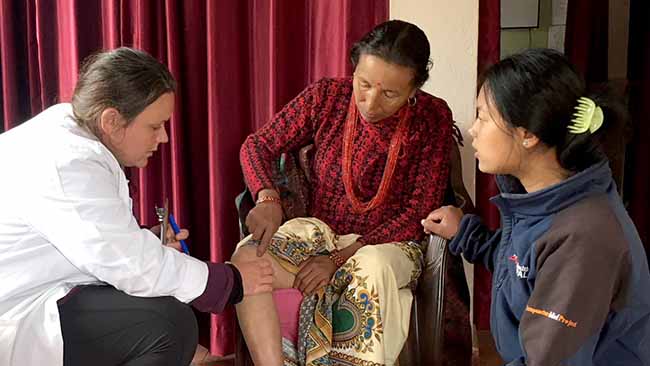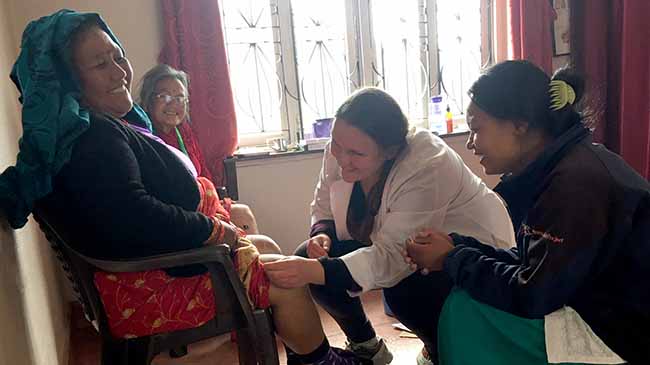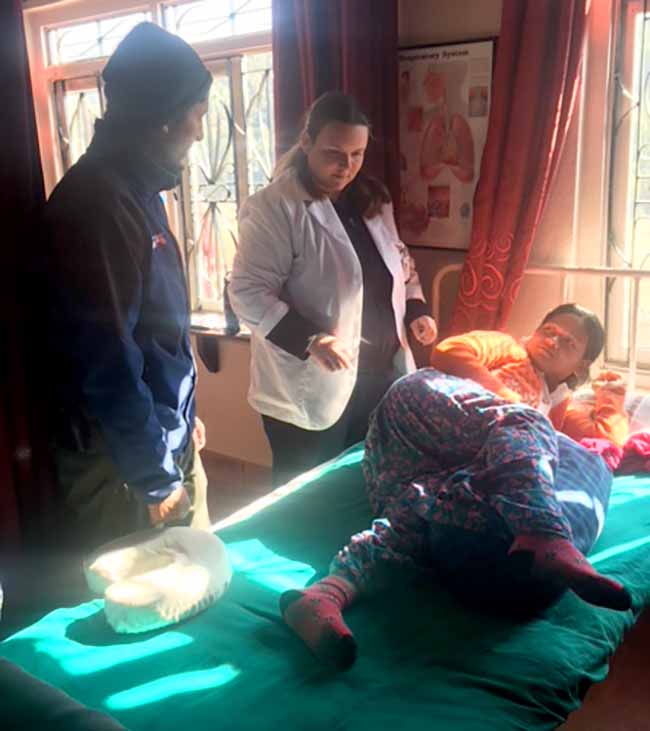
When I started fundraising for this volunteer trip, many friends asked me why I chose to come to Nepal with ARP, and my simple response was, “to step out of my comfort zone.” I have very limited international travel experience, and I knew that providing healthcare in a developing country for an extended period of time would challenge me on various levels, providing me with an opportunity for both personal and professional growth.
Fast-forward to my 8-hour layover in Istanbul, Turkey, en route to Nepal. As I roamed the airport, I realized that several conversations were happening around me in languages unfamiliar to my English-speaking tongue, and I suddenly felt a loss of connection within an airport full of people. My ears searched for words of my native language amongst the crowds of people in transit and waiting, but to no avail. Finally, after some time, I heard English words spoken from the mouth of someone sitting at a table adjacent to mine, and I initiated a conversation with the man who spoke those words that were familiar to me. Only a few hours had passed since I stepped off the plane, but I was already longing to connect with someone amongst the crowd of foreign travelers.

When my flight arrived in Kathmandu, there was a lot of confusion amongst passengers about the process of obtaining a visa. One older gentlemen was having a problem with the visa machine, and urgently trying to solicit our help in his native tongue, Italian, but no one could understand him. After my failed attempt at trying to pick out pieces of his language in order to assist him, the Finnish man I had befriended on the plane said to me, “It’s difficult when you don’t have a common language.”
How do I find a way to connect with patients when we don’t share a common language? As a practitioner, we rely heavily upon verbal and body cues from our patients. Now I’m in a setting where the patients’ verbal cues, and even many of their body cues, are communicated through the interpreter. The interpreters play a vital role in the patient-practitioner relationship here, but my direct connection to the patient becomes lost through translation, so my challenge has been to find other methods of connecting with patients.

I asked myself how I could demonstrate to my patients that I was actively engaged in their treatments. The first thing that came to mind was through direct eye contact. When I speak with patients, I make a valiant effort to look directly at them. At times, it has proven to be more difficult to remember to do than others. My tendency is to want to look at the interpreters, as they speak the language that’s familiar to my ears, and perhaps, even more so now that we’ve developed a rapport over my time here. I’ve also noticed that a patient’s tendency is to also look at the interpreter, as they speak their native language. Many of the patients have been coming to clinic long before I started here, and they too, have developed a rapport with the interpreters, most of whom live within the community. Yet there are also many moments in which I do make direct eye contact with patients as I’m asking questions or giving advice, and in these moments, my perspective shifts from a practitioner trying to solve a problem, to a person connecting with another person, in spite of our language and cultural differences.
Another means of connecting with my patients has been through touch. As many of the patients are coming in with pain conditions— usually a by-product of wear and tear from years of manual labor— I use palpation, both as a diagnostic tool and as a means of connection. I feel for areas of tenderness around the knee, as the patient describes his/her level and quality of pain. I palpate the back to feel for areas of tightness and tenderness, and any vertebral subluxations or spinal misalignments. If a patient complains of abdominal pain, I feel for certain signs, such as McBurney’s (appendicitis), and palpate the abdomen as I talk to the patient about symptoms, to get an idea as to which organs are involved. A couple of weeks ago, I developed a ritual of applying oils for pain on most patients. Although medically beneficial, I’ve found myself using the oils more so as another avenue of physically connecting with my patients at the end of their treatments.

My favorite way of connecting with patients is through laughter. Usually patients are in pain or sick when they enter the clinic. Sometimes cracking a joke lightens the mood, and makes the patient feel more at ease. When I feel the stress of getting through my patient load for the day, humor and laughter help to alleviate the pressure. I find that the days in which I laugh more feel lighter, regardless of the types of ailments I treated that day. I hope that when I laugh with patients, it enables them to get a glimpse of me beyond my white coat, as I know it allows me to pause for a moment and create a deeper connection beyond that of patient-practitioner— creating that connection with a fellow human being. --- Kimberly Shields











